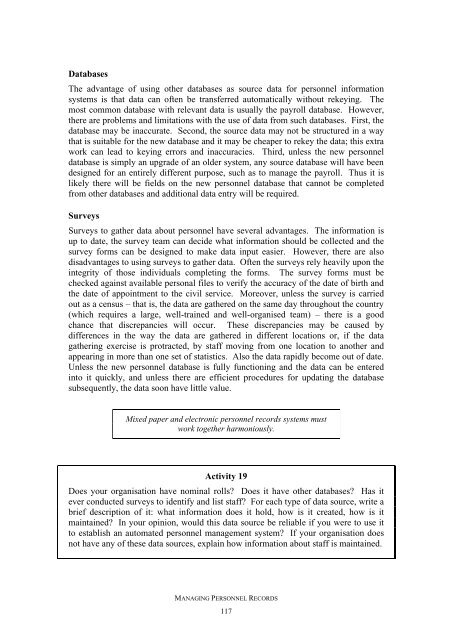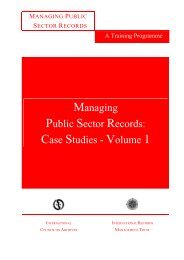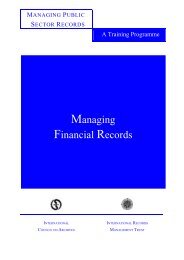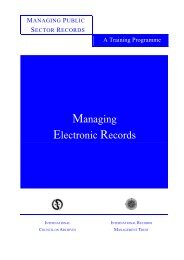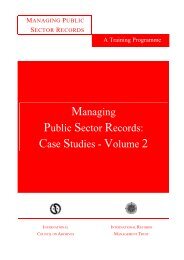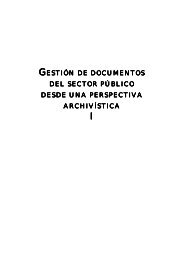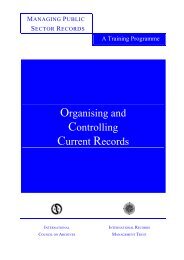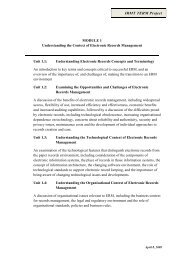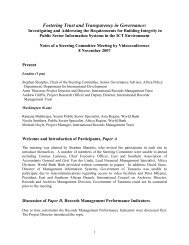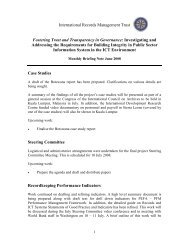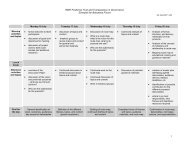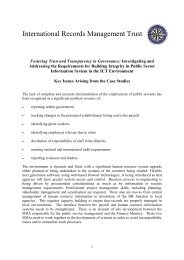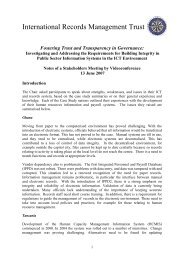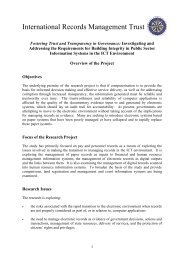Managing Personnel Records - International Records Management ...
Managing Personnel Records - International Records Management ...
Managing Personnel Records - International Records Management ...
Create successful ePaper yourself
Turn your PDF publications into a flip-book with our unique Google optimized e-Paper software.
Databases<br />
The advantage of using other databases as source data for personnel information<br />
systems is that data can often be transferred automatically without rekeying. The<br />
most common database with relevant data is usually the payroll database. However,<br />
there are problems and limitations with the use of data from such databases. First, the<br />
database may be inaccurate. Second, the source data may not be structured in a way<br />
that is suitable for the new database and it may be cheaper to rekey the data; this extra<br />
work can lead to keying errors and inaccuracies. Third, unless the new personnel<br />
database is simply an upgrade of an older system, any source database will have been<br />
designed for an entirely different purpose, such as to manage the payroll. Thus it is<br />
likely there will be fields on the new personnel database that cannot be completed<br />
from other databases and additional data entry will be required.<br />
Surveys<br />
Surveys to gather data about personnel have several advantages. The information is<br />
up to date, the survey team can decide what information should be collected and the<br />
survey forms can be designed to make data input easier. However, there are also<br />
disadvantages to using surveys to gather data. Often the surveys rely heavily upon the<br />
integrity of those individuals completing the forms. The survey forms must be<br />
checked against available personal files to verify the accuracy of the date of birth and<br />
the date of appointment to the civil service. Moreover, unless the survey is carried<br />
out as a census – that is, the data are gathered on the same day throughout the country<br />
(which requires a large, well-trained and well-organised team) – there is a good<br />
chance that discrepancies will occur. These discrepancies may be caused by<br />
differences in the way the data are gathered in different locations or, if the data<br />
gathering exercise is protracted, by staff moving from one location to another and<br />
appearing in more than one set of statistics. Also the data rapidly become out of date.<br />
Unless the new personnel database is fully functioning and the data can be entered<br />
into it quickly, and unless there are efficient procedures for updating the database<br />
subsequently, the data soon have little value.<br />
Mixed paper and electronic personnel records systems must<br />
work together harmoniously.<br />
Activity 19<br />
Does your organisation have nominal rolls? Does it have other databases? Has it<br />
ever conducted surveys to identify and list staff? For each type of data source, write a<br />
brief description of it: what information does it hold, how is it created, how is it<br />
maintained? In your opinion, would this data source be reliable if you were to use it<br />
to establish an automated personnel management system? If your organisation does<br />
not have any of these data sources, explain how information about staff is maintained.<br />
MANAGING PERSONNEL RECORDS<br />
117


